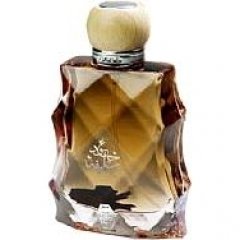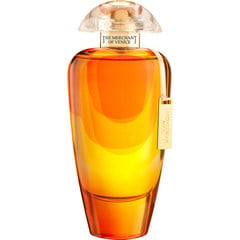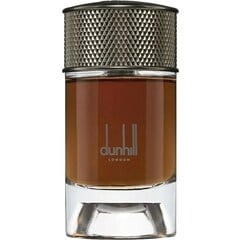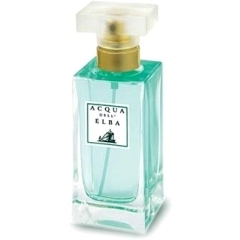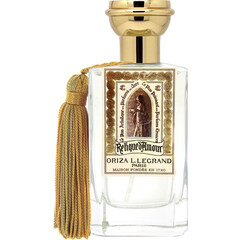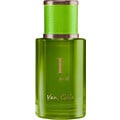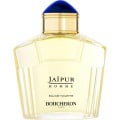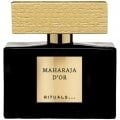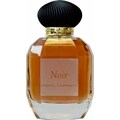
Arcane
Reviews
Filter & sort
Oudh Arabian
After acquiring a full bottle at a bargain price, I've worn Oudh Khalifa a fair number of times to jot down these few lines to share with the Parfumo community.
Starting off with the bottle: it is both unusual and asymmetrical (two times a plus in my book). Considering its Arabian origin pleasantly restrained in its label and overall design. Slightly wobbly when put on the shelf. The liquid inside I'd describe to be on the dark side of brown, like a pine forest in autumn. Within that liquid a few bits of wood are adrift. It would surprise me if they were of real oudh, but knowing the price of that precious commodity I won't vouch for it. Could be a gimmick, like the worm in a bad mezcal (word to the wise: never buy a mezcal that has a worm in it). The sprayer, more importantly, is of quality, allowing for a precise dosage.
As for the scent itself: Oudh Khalifa is of the simple medicinal-woody kind, linear as can be, with no more than a hint of non-vanillic sweetness during the final part of the drydown. It does, alas, become a skin scent all too quickly. Which in my case is rather strange, as Arabian oud(h) fragrances tend to last a long time on my skin. Musk I do not detect.
I like Oudh Khalifa for its uncompromising non-Western style, but I wear (and royally overspray) it for myself only - when I don't have to go out that is. The reason being that if I passed people in the street, most of them would probably think they just entered a hospital ward. I'd feel a bit embarrassed really. This acquisition will have to remain one of those private affairs, albeit an enjoyable one. And as such, it's an all-seasons fragrance. Nice.
Starting off with the bottle: it is both unusual and asymmetrical (two times a plus in my book). Considering its Arabian origin pleasantly restrained in its label and overall design. Slightly wobbly when put on the shelf. The liquid inside I'd describe to be on the dark side of brown, like a pine forest in autumn. Within that liquid a few bits of wood are adrift. It would surprise me if they were of real oudh, but knowing the price of that precious commodity I won't vouch for it. Could be a gimmick, like the worm in a bad mezcal (word to the wise: never buy a mezcal that has a worm in it). The sprayer, more importantly, is of quality, allowing for a precise dosage.
As for the scent itself: Oudh Khalifa is of the simple medicinal-woody kind, linear as can be, with no more than a hint of non-vanillic sweetness during the final part of the drydown. It does, alas, become a skin scent all too quickly. Which in my case is rather strange, as Arabian oud(h) fragrances tend to last a long time on my skin. Musk I do not detect.
I like Oudh Khalifa for its uncompromising non-Western style, but I wear (and royally overspray) it for myself only - when I don't have to go out that is. The reason being that if I passed people in the street, most of them would probably think they just entered a hospital ward. I'd feel a bit embarrassed really. This acquisition will have to remain one of those private affairs, albeit an enjoyable one. And as such, it's an all-seasons fragrance. Nice.
Summer Night Dreams
About a year and a half ago I acquired a full bottle version of Andalusian Soul from The Merchant of Venice, yet for some reason or other forgot to add it to my collection on Parfumo. The beautiful Murano bottle – some of TMoV's bottles rightly rank among the most elegant of our perfumed times –, with its sundrenched hues of orange, red, yellow and ochre, is a sight to behold. Its colour nuances convey exactly what is inside the glass: a slightly smoky and spicy, not-too-sweet dream of the south of Spain. It has that bit of mystery of the gypsies found there, with their gorgeous olive-skinned femmes fatales burning themselves up in a wild flamenco dance, throwing their long raven-black hair around to the sound of passionate guitar chords rooting in the old travelling cultures of even more exotic places. There's something sultry to this wonderful scent, reminding one of that particular abandon which certain long hot Summer nights can conjure up. Who knows what the madrugada will bring?
As for the vanilla component in the base: to me, thankfully it remains firmly within bounds. If there's a sweetness here, then it is, without a doubt, of the creamy ambery kind. As a result, it acts in a so much more subtle manner than your average ice cream-that-comes-in-a-pint type of vanilla could ever hope to do. Smoke and spice – as well as the sage – bring just that intriguing soupçon of a deep oriental flavour to the table.
Andalusian Soul, like many of The Merchant's offerings, is an intimate delight when sprayed modestly. Nonetheless sillage and performance – on my skin – are quite decent. On a shirt, you will clearly smell its warm scent the day after you've worn it. For a few spritzes more – preferably in the neck, on the chest and arms –, you'll leave an alluring trail of refinement in your wake.
As for the vanilla component in the base: to me, thankfully it remains firmly within bounds. If there's a sweetness here, then it is, without a doubt, of the creamy ambery kind. As a result, it acts in a so much more subtle manner than your average ice cream-that-comes-in-a-pint type of vanilla could ever hope to do. Smoke and spice – as well as the sage – bring just that intriguing soupçon of a deep oriental flavour to the table.
Andalusian Soul, like many of The Merchant's offerings, is an intimate delight when sprayed modestly. Nonetheless sillage and performance – on my skin – are quite decent. On a shirt, you will clearly smell its warm scent the day after you've worn it. For a few spritzes more – preferably in the neck, on the chest and arms –, you'll leave an alluring trail of refinement in your wake.
A gentleman's exquisite slow-fade tobacco
Before even trying a single spray, it is obvious that this fragrance from Dunhill's Signature Collection cannot possibly be anything else but masculine: that's one serious monolith of a bottle. It could very well be a substitute for the leg of lamb in Roald Dahl's murderous masterpiece of graveyard humour 'Lamb To The Slaughter'. Sometimes, one is tempted to affirm, size does matter.
What matters also, if not more, is what's inside the flacon, sizeable or not. And what's inside the pillar-like edifice of Egyptian Smoke is as seriously masculine as its housing. The liquid's moody colour wonderfully conveys what the fragrance smells like. Imagine a gentleman's club situated somewhere in the heart of London circa 1890. You know, the kind of establishment where botanists, archeologists, ornithologists and such reside in regal Chesterfields, puffing away at their costly Coronas, contentedly sipping burnt-sienna Armagnacs and talking shop with fellow explorers of exotic faraways. Tobacco leaves of various origins, a soothing sweet smoke swirling about the chairs, that particular smell of old, well-worn leather, a hint of resins. And Ceylon tea. Or, when evenings lengthen, things darken and melancholy enters the premises, Darjeeling. The distinct black tea note harmonises perfectly with the dried tobacco leaves and, contrary to those in many a tea-forward scent, manages to hold its ground for a surprisingly long time. The rose de Grasse mentioned in the brand's official description I do not pick up on at all. Which in this case is a plus for me, as it does not distract from the sweetish-smoky tobacco leaves experience I specifically sought Egyptian Smoke out for.
As with most fragrances in which tobacco leaves are playing the lead, the subtle sweetness has the added pleasure of a certain spiciness. Nothing harsh or obtrusive, mind you, but very smooth and soft, as if a lighter pepper, ginger, cardamom and cinnamon were ground in a mortar and then set apart for a few nights with a closed lid, to be used in preparing a rather special oven dish (there's that leg of lamb again). Neither cardamom nor cinnamon are listed in the note pyramid, yet to me they somehow seem to be part of the exquisite mélange that is Egyptian Smoke.
Now with a name like that one would expect this perfume to contain a kyphi note. It does not. Which probably is a fortunate thing, as kyphi arguably is the most pungent of incenses surviving from the ancient Egypt of the pharaohs. To be honest, my nose does not really detect an incense note in the composition's base. In fact, Egyptian Smoke's Egyptian smokiness is more of an allusion to an atmosphere than a recreation of the actual scent of smoke, be it incense-like, pipe-tobacco-sweet or otherwise.
As the fragrance experience progresses, the scent almost inevitably moves into amber and tonka bean territory; not the caramel or dessert liqueur sweet, of course; this is Dunhill after all. No, after circa four to five hours it has a late dry-down phase of a restrained ambery vanilla, so it's a slight bit resinous. And that's how Egyptian Smoke slowly and beautifully fades away on my skin. On a shirt it remains present until that piece of clothing is put in the wash.
One would surmise that to most fragrance afficionadi this might seem to be an autumn and winter affair exclusively. For me it fits any season, albeit for evening and past-the-witching-hour wear mainly. Above all, Egyptian Smoke gives the impression of being very 'Britannia Rules The Waves' in character. It is a most elegant treat for the distinguished, courteous fifty-something gentleman who is well-read and knows how to dress (and is perhaps enough of an individual to wear a fez whenever the whimsical mood strikes him). Indeed something for a man who holds an old-fashioned yet youthful charm for women his own age, and eyes the world of ever-erring humans with a certain disillusioned detachment. That is not a bad thing per se, quite the contrary: it's just the harvest of half a life's experience. So: what better scent to go with more than half a novel of personal history than Dunhill's alluring Egyptian Smoke?
What matters also, if not more, is what's inside the flacon, sizeable or not. And what's inside the pillar-like edifice of Egyptian Smoke is as seriously masculine as its housing. The liquid's moody colour wonderfully conveys what the fragrance smells like. Imagine a gentleman's club situated somewhere in the heart of London circa 1890. You know, the kind of establishment where botanists, archeologists, ornithologists and such reside in regal Chesterfields, puffing away at their costly Coronas, contentedly sipping burnt-sienna Armagnacs and talking shop with fellow explorers of exotic faraways. Tobacco leaves of various origins, a soothing sweet smoke swirling about the chairs, that particular smell of old, well-worn leather, a hint of resins. And Ceylon tea. Or, when evenings lengthen, things darken and melancholy enters the premises, Darjeeling. The distinct black tea note harmonises perfectly with the dried tobacco leaves and, contrary to those in many a tea-forward scent, manages to hold its ground for a surprisingly long time. The rose de Grasse mentioned in the brand's official description I do not pick up on at all. Which in this case is a plus for me, as it does not distract from the sweetish-smoky tobacco leaves experience I specifically sought Egyptian Smoke out for.
As with most fragrances in which tobacco leaves are playing the lead, the subtle sweetness has the added pleasure of a certain spiciness. Nothing harsh or obtrusive, mind you, but very smooth and soft, as if a lighter pepper, ginger, cardamom and cinnamon were ground in a mortar and then set apart for a few nights with a closed lid, to be used in preparing a rather special oven dish (there's that leg of lamb again). Neither cardamom nor cinnamon are listed in the note pyramid, yet to me they somehow seem to be part of the exquisite mélange that is Egyptian Smoke.
Now with a name like that one would expect this perfume to contain a kyphi note. It does not. Which probably is a fortunate thing, as kyphi arguably is the most pungent of incenses surviving from the ancient Egypt of the pharaohs. To be honest, my nose does not really detect an incense note in the composition's base. In fact, Egyptian Smoke's Egyptian smokiness is more of an allusion to an atmosphere than a recreation of the actual scent of smoke, be it incense-like, pipe-tobacco-sweet or otherwise.
As the fragrance experience progresses, the scent almost inevitably moves into amber and tonka bean territory; not the caramel or dessert liqueur sweet, of course; this is Dunhill after all. No, after circa four to five hours it has a late dry-down phase of a restrained ambery vanilla, so it's a slight bit resinous. And that's how Egyptian Smoke slowly and beautifully fades away on my skin. On a shirt it remains present until that piece of clothing is put in the wash.
One would surmise that to most fragrance afficionadi this might seem to be an autumn and winter affair exclusively. For me it fits any season, albeit for evening and past-the-witching-hour wear mainly. Above all, Egyptian Smoke gives the impression of being very 'Britannia Rules The Waves' in character. It is a most elegant treat for the distinguished, courteous fifty-something gentleman who is well-read and knows how to dress (and is perhaps enough of an individual to wear a fez whenever the whimsical mood strikes him). Indeed something for a man who holds an old-fashioned yet youthful charm for women his own age, and eyes the world of ever-erring humans with a certain disillusioned detachment. That is not a bad thing per se, quite the contrary: it's just the harvest of half a life's experience. So: what better scent to go with more than half a novel of personal history than Dunhill's alluring Egyptian Smoke?
Un bagno di fiori
Did it ever cross your mind to sink into a bath of flowers, spritzed with sparkly citrus and sprinkled with a Mediterranean breeze, an undercurrent that's hard to define wrapping you in bliss while you lay your head to rest? Well, Acqua dell'Elba's eau de parfum version of Arcipelago Donna might just be exactly what you wish for. And what a joy it is sinking into it.
Unapologetically floral in the warm Italian sense of the term, Arcipelago almost literally washes over you, opening with a lemon-and-mandarin-orange lemonade spritz that punches in a good, fizzy sort of way. And – to my nose at least – knocks out the apricot listed in the pyramid. This, then, turns out to be the short-but-sweet overture to a high-summer wave of mainly jasmin coupled with immortelle and orange blossom brightness. Intoxicating to say the least.
There's just the slightest hint of something watery-salty which remains a bit of a mystery, giving the fragrance that typical airiness of the Mediterranean coast. As it develops, the wonderful bouquet, which in its fullest bloom is almost a choir of colours, fades all-too-quickly. What you're left with is an ever so light amberiness that sits really close to the skin, albeit for a certain period of time. This faint trace of amber might come from the arbutus in the base, who knows (I had to look up what it actually is). I don't pick up on the cedar in the base, which I find a pity.
Its relative longevity as a simplified skin scent notwithstanding, Arcipelago Donna after about two hours produces that particular urge in the perfume afficionado: to reach for the bottle and reapply, just to re-experience that opening and (in this case) first phase of the drydown. Because, well, who wouldn't for an hour or two want to sink into a bath of citrus-crowned, almost secretly sea-salted Mediterranean flowers?
Unapologetically floral in the warm Italian sense of the term, Arcipelago almost literally washes over you, opening with a lemon-and-mandarin-orange lemonade spritz that punches in a good, fizzy sort of way. And – to my nose at least – knocks out the apricot listed in the pyramid. This, then, turns out to be the short-but-sweet overture to a high-summer wave of mainly jasmin coupled with immortelle and orange blossom brightness. Intoxicating to say the least.
There's just the slightest hint of something watery-salty which remains a bit of a mystery, giving the fragrance that typical airiness of the Mediterranean coast. As it develops, the wonderful bouquet, which in its fullest bloom is almost a choir of colours, fades all-too-quickly. What you're left with is an ever so light amberiness that sits really close to the skin, albeit for a certain period of time. This faint trace of amber might come from the arbutus in the base, who knows (I had to look up what it actually is). I don't pick up on the cedar in the base, which I find a pity.
Its relative longevity as a simplified skin scent notwithstanding, Arcipelago Donna after about two hours produces that particular urge in the perfume afficionado: to reach for the bottle and reapply, just to re-experience that opening and (in this case) first phase of the drydown. Because, well, who wouldn't for an hour or two want to sink into a bath of citrus-crowned, almost secretly sea-salted Mediterranean flowers?
Images of forever
If you have a passion for both the fragrance universe and all things fin de siècle, chances are you will sooner or later come across the olfactive creations of Oriza L. Legrand. Founded in 1720 in Paris, the maison has centuries of perfumery to proudly look back on, and thus oozes tradition and refinement.
Here you will not find minimalist bottles containing bizarre concoctions just for the hell of it. No vulgar fragrance names. No tasteless and alienating Photoshop-perverted sexless creatures spawned from the warped imagination of an ultra-urban activist. And may I just say: thank you.
Legrand's is not a gimmicky house catering to a flavour-of-the-week audience; it has been around for an incredible four-hundred years and will survive every fluffy fad and unsavoury fashion regardless of how excess-infested, gloomy and surreal our hopelessly decadent times may (have) become. Now, one could argue that the perfume industry and its clientele are in an unholy decadent union to begin with, but that would be pooping the party somewhat, perhaps even be a tad nihilist, wouldn't it?
So, here we find ourselves once again at the pantheist's shrine of scent, the object of worship this time being Relique d'Amour, part of Oriza L. Legrand's Exposition Universelle 1900 heritage collection. Before anything, one thing can be said with certainty of this eau de parfum: those who tend to avoid so-called “old people” fragrances are advised to steer well clear of this one – and perhaps even from the maison that issues it. For this chypre is not just a turn-of-the-century relic of love, be that love an earthly one or an otherworldly one. No, it truly is a relic of a time long past. And yet it is a reverence to a time eternal.
Imagine, if you can, attending mass on a sunny Sunday more than a century ago in a small town church somewhere in, say, Bourgogne, or Burgundy, if you prefer. It is a tad chilly inside, yet the rays of the morning sun make the many-coloured panels of the stained glass windows come alive with brightness.
And, praises to all draughty churches everywhere, there is that very particular bouquet of scents all around you. Some lighter variety of frankincense, smouldering. A touch of myrrh - or is it licorice? The wood of the ancient church benches, freshly polished. The various wafts coming off Sunday clothes. Clothes from the wardrobes of so many different homes and lives. Suits, shirts, dresses, skirts, hats, shoes, socks, stockings reserved for that weekly appointment with the Catholic faith, or perhaps with a certain tradition that is not yet questioned. Then there are the scents of the women's dressing table powders, oils and light perfumes. The mints in their ever-unfathomable purses, of course. The men's matching fresh colognes, for pure enjoyment. Or to mask hopelessly tobacco smoke-infused textiles. Or both.
There's the aloofness of the old walls with its paintings of biblical scenes and its silent statues of saints, there's the cold stone of the church floor. The fresh, impeccably white linen covering the table on which the sacred objects await their turn in the ceremony. And then there is that one special scent that seems to come from further away, yet you cannot quite place it.
As the parson is about to ascend the pulpit, your thoughts wander. What, now, is that scent? Your memory fails you. Time lapses. Until the image of the Saviour on the cross finally tells you: it is the scent of death. La mort. Or rather the scent pervading a day of mourning. Yes, that's exactly what it is. The scent of the funeral parlour across the road, just a few mortal's steps away from the cemetery. Lilies. White. The whitest of lilies. Those flowers so cherished by stage diva Sarah Bernhardt for their stately elegance and their scent of a grave and funereal beauty. Everything about them speaks of silence and contemplation.
And this, dear perfumistas and perfumistos, is what Relique d'Amour smells like. It is, like all good fragrances, not so much a string of scent components complementing one another as it is an atmosphere. Whereas many fragrance wearers are primarily and quite understandably focused on scents evoking sun-streamed dolce far niente, beautiful people and smooth caramel skin, a minority of individuals deeply appreciate that different take on perfuming. Relique d'Amour, which for some may come across as cold, is the very antithesis to the worldly perfume. At the same time it is also its own paradox: while being the opposite of the transient and the ephemeral, this fragrance can be said to be highly transient and ephemeral itself. Yet – and here we have the olfactory sorcery of the perfumer Hugo Lambert creating an atmosphere ex nihilo – even after it has faded away on the skin, it leaves its scent trail in that most enigmatic human asset of all: our memory.
The fleeting presence, and to many people undoubtedly somewhat strange comfort of Relique d'Amour remind us – if I may extend the existential metaphor – of how transitory our lives are. And that, precisely, is the original meaning of “Memento Mori, Carpe Diem”: by reflecting upon our mortality, we are encouraged to seize the day – and vice versa. To appreciate life and be in awe of death, whichever tide we may have to brave during our all-too-brief visit to this absurd state of consciousness between the before and the hereafter.
Relique d'Amour is both a serious and an airy fragrance, and as such the perfect composition to express the “Memento Mori, Carpe Diem” adage through olfactory art. Being a scent for quiet and reflective evenings spent alone reading Huysmans-the-convert or perhaps De Maupassant, it is obviously not for everyone. That is not a negative thing, quite the contrary. Cool Water, in a different register, is not for everyone either.
If Relique were a colour, it would be the age-old white of Carrara marble, intricately patterned with a spider's web of veins in blue, grey, and black. If Relique were a piece of music, it would sound like the vespers sung by Benedictine monks at the basilica of Sainte-Marie-Madeleine on the hill of Vézelay (should you ever have had the pleasure of listening to that polyphonous beauty, you are now probably nodding in agreement, a wistful smile on your face).
Given the highly contemplative, introspective, almost sacral nature of Relique d'Amour it seems just a tad presumptuous and even superficial to rate its scent, sillage and longevity. I have done so nonetheless. Because, after all, we are still on this plane and this planet, and a perfume is still a perfume. And because after the inevitable and all-too-quick passing of this reflective rêverie of silence and serenity, the rest of the evening remains to be enjoyed. Memento Mori, Carpe Legrandum.
Here you will not find minimalist bottles containing bizarre concoctions just for the hell of it. No vulgar fragrance names. No tasteless and alienating Photoshop-perverted sexless creatures spawned from the warped imagination of an ultra-urban activist. And may I just say: thank you.
Legrand's is not a gimmicky house catering to a flavour-of-the-week audience; it has been around for an incredible four-hundred years and will survive every fluffy fad and unsavoury fashion regardless of how excess-infested, gloomy and surreal our hopelessly decadent times may (have) become. Now, one could argue that the perfume industry and its clientele are in an unholy decadent union to begin with, but that would be pooping the party somewhat, perhaps even be a tad nihilist, wouldn't it?
So, here we find ourselves once again at the pantheist's shrine of scent, the object of worship this time being Relique d'Amour, part of Oriza L. Legrand's Exposition Universelle 1900 heritage collection. Before anything, one thing can be said with certainty of this eau de parfum: those who tend to avoid so-called “old people” fragrances are advised to steer well clear of this one – and perhaps even from the maison that issues it. For this chypre is not just a turn-of-the-century relic of love, be that love an earthly one or an otherworldly one. No, it truly is a relic of a time long past. And yet it is a reverence to a time eternal.
Imagine, if you can, attending mass on a sunny Sunday more than a century ago in a small town church somewhere in, say, Bourgogne, or Burgundy, if you prefer. It is a tad chilly inside, yet the rays of the morning sun make the many-coloured panels of the stained glass windows come alive with brightness.
And, praises to all draughty churches everywhere, there is that very particular bouquet of scents all around you. Some lighter variety of frankincense, smouldering. A touch of myrrh - or is it licorice? The wood of the ancient church benches, freshly polished. The various wafts coming off Sunday clothes. Clothes from the wardrobes of so many different homes and lives. Suits, shirts, dresses, skirts, hats, shoes, socks, stockings reserved for that weekly appointment with the Catholic faith, or perhaps with a certain tradition that is not yet questioned. Then there are the scents of the women's dressing table powders, oils and light perfumes. The mints in their ever-unfathomable purses, of course. The men's matching fresh colognes, for pure enjoyment. Or to mask hopelessly tobacco smoke-infused textiles. Or both.
There's the aloofness of the old walls with its paintings of biblical scenes and its silent statues of saints, there's the cold stone of the church floor. The fresh, impeccably white linen covering the table on which the sacred objects await their turn in the ceremony. And then there is that one special scent that seems to come from further away, yet you cannot quite place it.
As the parson is about to ascend the pulpit, your thoughts wander. What, now, is that scent? Your memory fails you. Time lapses. Until the image of the Saviour on the cross finally tells you: it is the scent of death. La mort. Or rather the scent pervading a day of mourning. Yes, that's exactly what it is. The scent of the funeral parlour across the road, just a few mortal's steps away from the cemetery. Lilies. White. The whitest of lilies. Those flowers so cherished by stage diva Sarah Bernhardt for their stately elegance and their scent of a grave and funereal beauty. Everything about them speaks of silence and contemplation.
And this, dear perfumistas and perfumistos, is what Relique d'Amour smells like. It is, like all good fragrances, not so much a string of scent components complementing one another as it is an atmosphere. Whereas many fragrance wearers are primarily and quite understandably focused on scents evoking sun-streamed dolce far niente, beautiful people and smooth caramel skin, a minority of individuals deeply appreciate that different take on perfuming. Relique d'Amour, which for some may come across as cold, is the very antithesis to the worldly perfume. At the same time it is also its own paradox: while being the opposite of the transient and the ephemeral, this fragrance can be said to be highly transient and ephemeral itself. Yet – and here we have the olfactory sorcery of the perfumer Hugo Lambert creating an atmosphere ex nihilo – even after it has faded away on the skin, it leaves its scent trail in that most enigmatic human asset of all: our memory.
The fleeting presence, and to many people undoubtedly somewhat strange comfort of Relique d'Amour remind us – if I may extend the existential metaphor – of how transitory our lives are. And that, precisely, is the original meaning of “Memento Mori, Carpe Diem”: by reflecting upon our mortality, we are encouraged to seize the day – and vice versa. To appreciate life and be in awe of death, whichever tide we may have to brave during our all-too-brief visit to this absurd state of consciousness between the before and the hereafter.
Relique d'Amour is both a serious and an airy fragrance, and as such the perfect composition to express the “Memento Mori, Carpe Diem” adage through olfactory art. Being a scent for quiet and reflective evenings spent alone reading Huysmans-the-convert or perhaps De Maupassant, it is obviously not for everyone. That is not a negative thing, quite the contrary. Cool Water, in a different register, is not for everyone either.
If Relique were a colour, it would be the age-old white of Carrara marble, intricately patterned with a spider's web of veins in blue, grey, and black. If Relique were a piece of music, it would sound like the vespers sung by Benedictine monks at the basilica of Sainte-Marie-Madeleine on the hill of Vézelay (should you ever have had the pleasure of listening to that polyphonous beauty, you are now probably nodding in agreement, a wistful smile on your face).
Given the highly contemplative, introspective, almost sacral nature of Relique d'Amour it seems just a tad presumptuous and even superficial to rate its scent, sillage and longevity. I have done so nonetheless. Because, after all, we are still on this plane and this planet, and a perfume is still a perfume. And because after the inevitable and all-too-quick passing of this reflective rêverie of silence and serenity, the rest of the evening remains to be enjoyed. Memento Mori, Carpe Legrandum.

 Arcane
Arcane